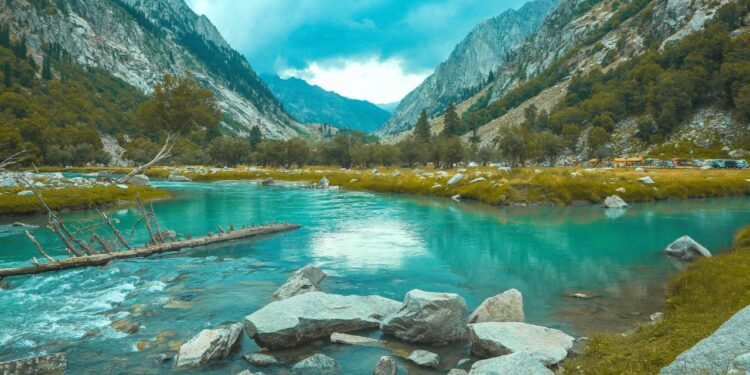Pakistan, a land brimming with diverse landscapes, rich history, and vibrant cultures, holds immense yet largely untapped potential in its tourism sector. From the towering peaks of the Karakoram and Hindu Kush ranges to the ancient ruins of the Indus Valley Civilization and the bustling cities steeped in Mughal architecture, the country offers a captivating array of experiences for travellers. However, despite its inherent attractions, Pakistan’s tourism industry has faced numerous challenges, hindering its growth and contribution to the national economy.
The natural beauty of Pakistan is undeniably its strongest asset. The northern regions, encompassing Gilgit-Baltistan and Khyber Pakhtunkhwa, boast breathtaking valleys, pristine lakes like Saiful Muluk and Attabad, and majestic glaciers. Adventure enthusiasts are drawn to the challenging treks and mountaineering opportunities, including K2, the world’s second-highest peak.
In contrast, the southern plains offer historical sites like Mohenjo-daro and Harappa, remnants of one of the world’s earliest civilisations. Lahore, with its Mughal-era forts, mosques, and gardens, showcases the grandeur of Islamic architecture, while the vibrant culture and bustling markets of Karachi provide a taste of modern Pakistani life. Furthermore, religious tourism holds significant potential, with numerous Sikh and Sufi shrines attracting devotees from across the globe.
Despite this wealth of attractions, Pakistan’s tourism industry has struggled to flourish.
Security concerns, particularly in the aftermath of the “War on Terror,” have cast a long shadow, deterring international travellers. Inadequate infrastructure, including low-quality accommodation, transportation networks, and tourist facilities, further compounds the issue. Moreover, negative perceptions perpetuated by international media often overshadow the reality of the warm hospitality and improving security situation in many parts of the country.
However, recent years have witnessed a renewed focus on promoting tourism in Pakistan.
The government has taken initiatives to improve security, streamline visa processes, and invest in infrastructure development. Social media and travel bloggers have played a crucial role in showcasing the country’s beauty and changing narratives. As a result, there has been a noticeable increase in both domestic and international tourism in certain regions.
To fully realise its tourism potential, Pakistan needs a multi-pronged approach. Continued efforts to ensure the safety and security of tourists are paramount. Investing in and upgrading infrastructure including roads, airports, and hotels, is crucial to enhancing the overall travel experience.
Furthermore, targeted marketing campaigns are needed to showcase the diverse attractions and counter negative perceptions. Promoting sustainable tourism practices that respect local cultures and environments is also essential for long-term growth.
Pakistan possesses all the ingredients to become a premier tourist destination. Its stunning natural landscapes, rich cultural heritage, and warm hospitality offer a unique and compelling experience for travellers. By addressing the existing challenges through sustained efforts in security, infrastructure development, and effective marketing, Pakistan can unlock the immense potential of its tourism sector, contributing significantly to its economic growth and global image. The journey may be long, but the rewards of showcasing “Amazing Pakistan” to the world are undoubtedly worth the effort.


